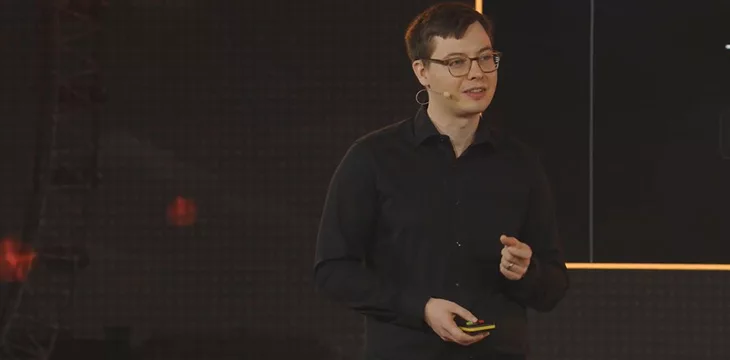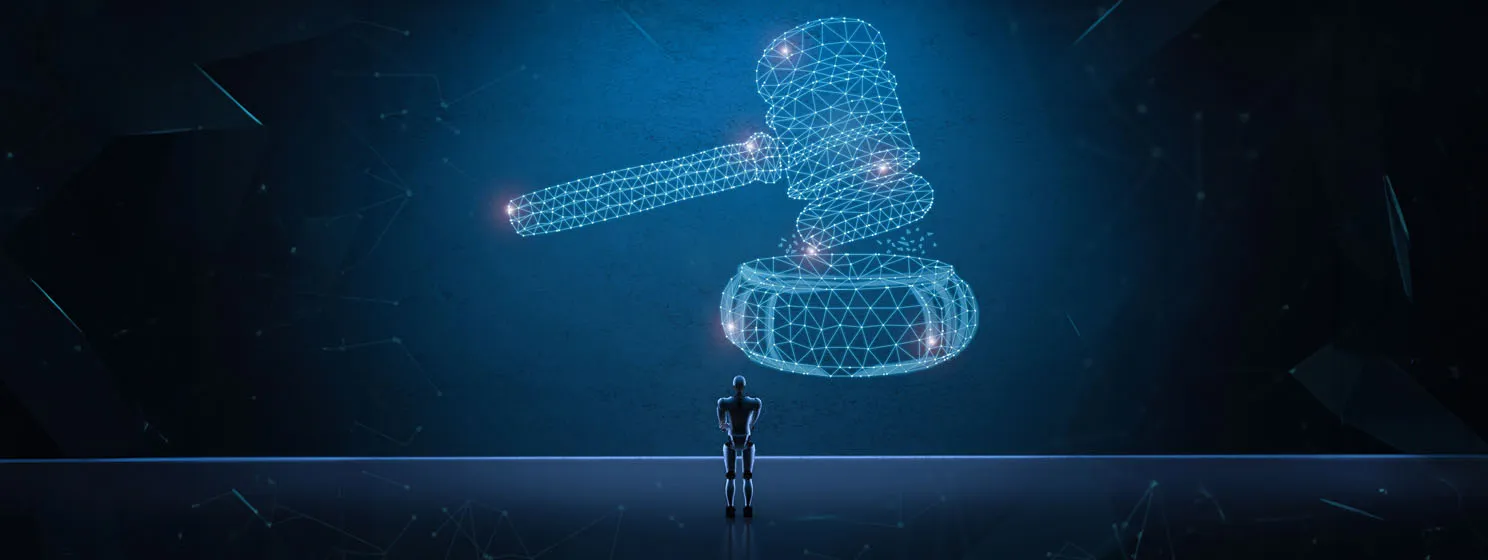|
Getting your Trinity Audio player ready...
|
More than anything else, the London Blockchain Conference 2023 is about companies building real-world utility using blockchain technology. On the conference’s final day, attendees were treated to an inside look at two products that aim to change how the world uses—and thinks about—the blockchain.
Simplicity and utility with Vaionex
BSV staple Vaionex was on-hand at the LBC 2023 business stage to provide an update on several projects the company has been working on.
As co-founder Robin Gounder took the stage, the company’s working slogan flashed on-screen in the background: solving blockchain’s biggest problems.
“That’s a bold claim,” Gounder acknowledges, particularly given how he frames the core problem—creating worldwide adoption. The key to solving this problem, he said, is two-pronged: utility and simplicity.
“If there’s no utility, you wouldn’t integrate [blockchain] in the first place,” he said. “If you have a massively complex system that only provides little utility, you’ll not gain any coverage.”
The BSV blockchain is already proving utility by some metrics. Gounder highlights the record-breaking 86 million transactions taking place on BSV blockchain within a 24-hour period. The key to setting this record—and the key to continuing to set records like it—will be about more than just regular payment transactions. Transactions can be smart contracts, micropayments, stablecoin payments.
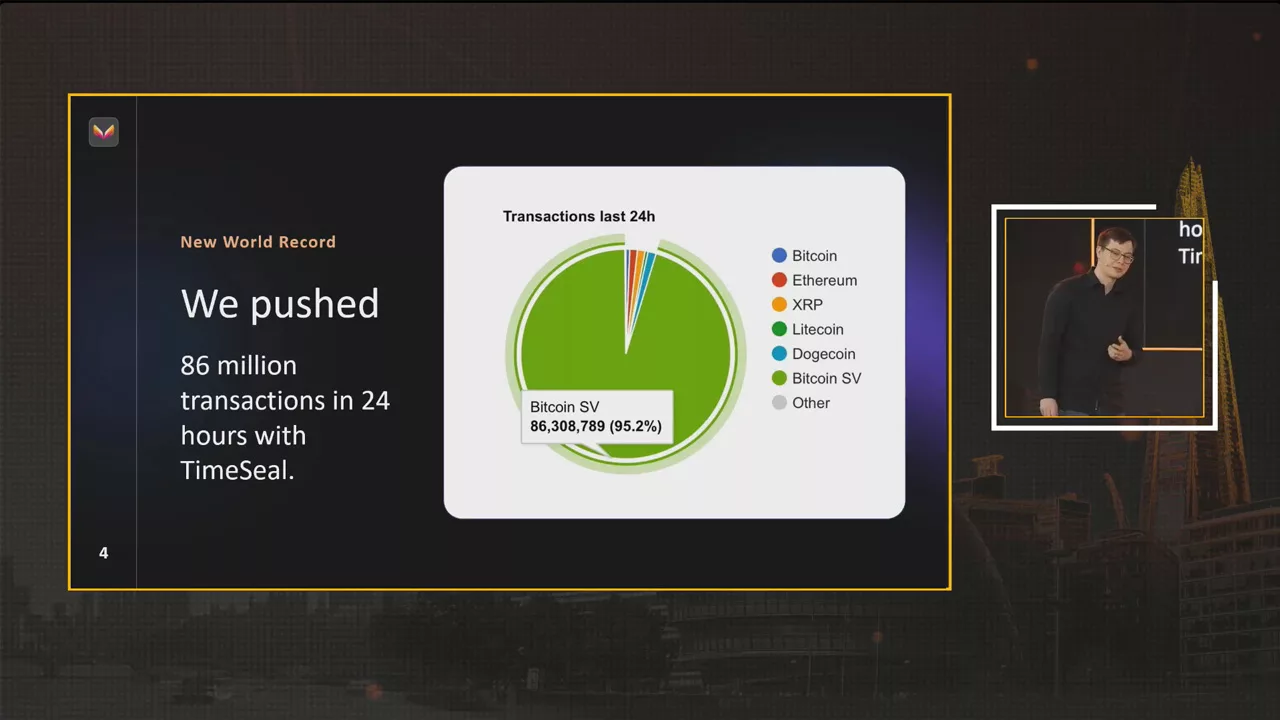
The reason these transactions are taking place on the blockchain is fundamentally timestamping: it’s the essence of the blockchain. But the blockchain is about much more than mere timestamps (every database has timestamps, says Gounder). It’s about the integrity of that data, those timestamps. The value offered by blockchain is that this data can never be changed.
That’s why Vaionex is introducing TimeSeal—named for the actual benefit of the blockchain—a tool allowing users to create blockchain apps in minutes.

“To create real utility, we cannot ask enterprises to join our blockchain platform. We have to do it the other way around: we have to go to the tools they already use,” said Gounder.
The tool everything already uses? Traditional databases.
“Therefore, what we did was integrate the blockchain in all major databases out there,” he added.
In one click, the blockchain can be integrated into any database, meaning blockchain platforms are no longer needed. Neither, says Gounder, is coding. The practical upshot is that the cost of creating blockchain applications goes from tens of thousands to just $10.
Then, Vaionex Lead Bitcoin Engineer Cain Nussdorfer took over to talk about the STAS BSV smart contract.
“Everybody loves tokens, right? But how we measure tokens on the blockchain is different. Layer 2 tokens, Layer 1 tokens. What STAS tokens are is they are layer 0. They are native to the blockchain.”
STAS is, in essence, a smart contract that represents a token and comes in different templates that can be used in different ways. The STAS-20 is the token used by the Swiss Franc stablecoin announced by Centi, for instance.
STAS-789 is another innovative token that allows for new data to be added to the token over the course of its life, appending new data with each successive transaction. It enables the creation of a verifiable record of events within the token.
The first tradeable digital token on a network was called 1 alpha. You can use any other digital currencies to trade it and get this token. A stablecoin that is guaranteed, that you know can be trusted. Vastly different from Tether and other things.
Gounder also showcased Relysia. Relysia is an app that aspires to be more than just a wallet—it wants to be an infrastructure unto itself. It boasts API and SDK packages to help users seamlessly integrate with the blockchain, supports STAS tokens and BSV tokens, and boasts a quality of life features such as pre-integrating fees for every transaction.
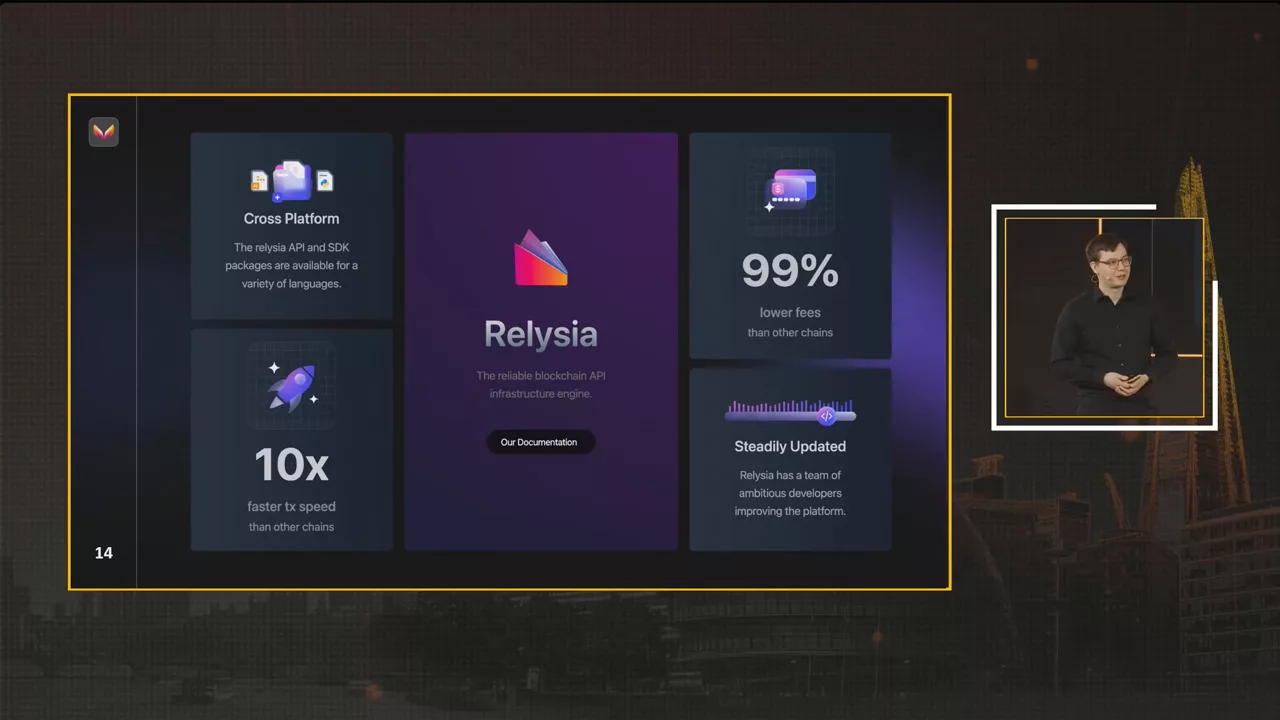
“The idea is to be more than a crypto wallet,” said Gounder. “The idea is to be a competitor to PayPal (NASDAQ: PYPL).”
Also discussed was Vaionex’s gaming platform Tegment, which integrates into many of the most popular games currently being played. CS:GO and Fortnite were shown, but the platform currently integrates with over 50 games to provide tournaments, leaderboards, and other integrations allowing players to stake and earn BSV.
Lastly, Gounder discussed NFTana, a free, open-source marketplace allowing atomic swaps on BSV blockchain.
A new blockchain sustainability index with WEB3C02
Also on Day 3, Tokenovate CEO Richard Baker and SmartLedger chief development officer Greg Ward introduced an exciting new development in the world of sustainability: WEB3C02.NET, a blockchain sustainability index that aims to deliver a complete picture of the energy efficiency of digital asset projects.
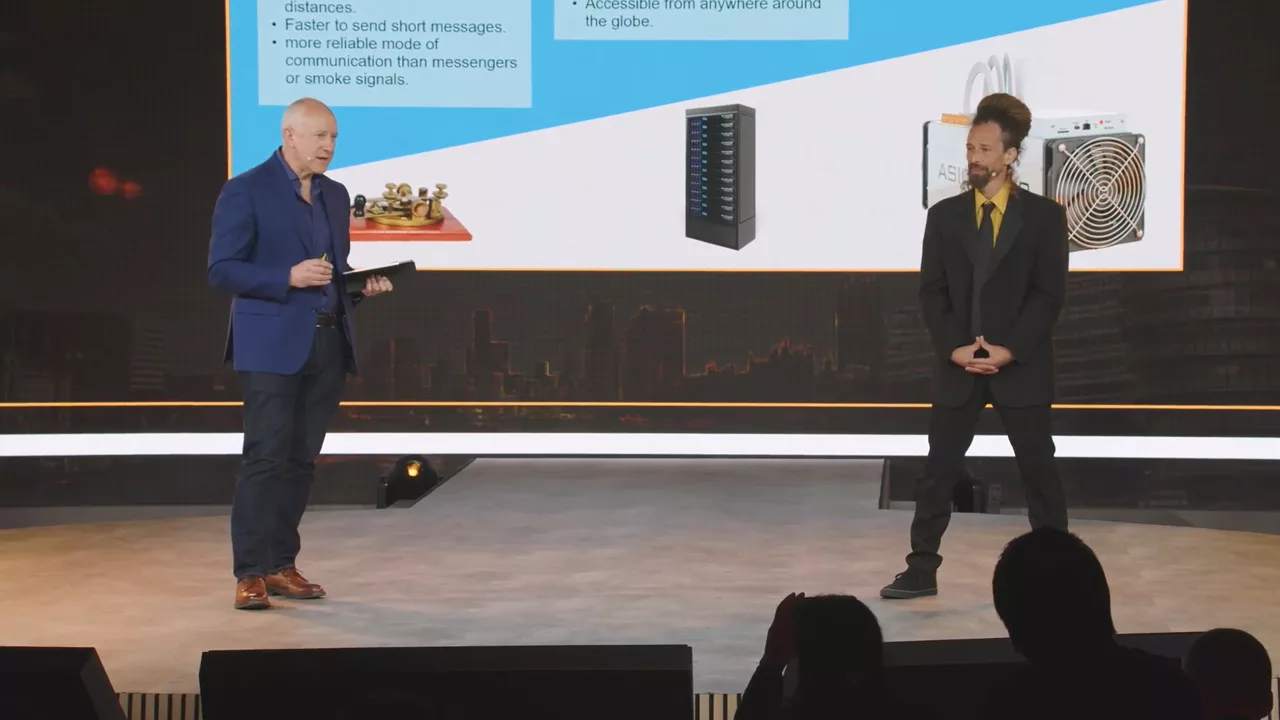
Baker says it’s a much-needed innovation based on his conversations with enterprises taking an interest in digital assets, where all generally come to him with the same question: what’s the footprint of these projects?
It’s not an easy question to answer accurately, at least using existing paradigms. Baker points out that digital assets are viewed differently in that they rarely measure their energy efficiency against their output like you would when measuring emissions in other contexts.
But for blockchain, the output is everything: people don’t tend to care about raw energy consumption so long as the output on the other side is worthwhile.
“Blockchain is an incredible opportunity for us in terms of transfer of value and integrity of data,” Baker says. “We want to see that this gives us the output on the other side that is actually going to give us something that society is going to say is worth the input.”
And when history is moving towards a world where blockchain is used for its real-world utility, a new way of looking at its energy efficiency is sorely needed.
With WEB3C02, says Ward, “we’re taking not just the raw energy input, but we’re taking into account the block size and transactional throughput of various blockchains.”
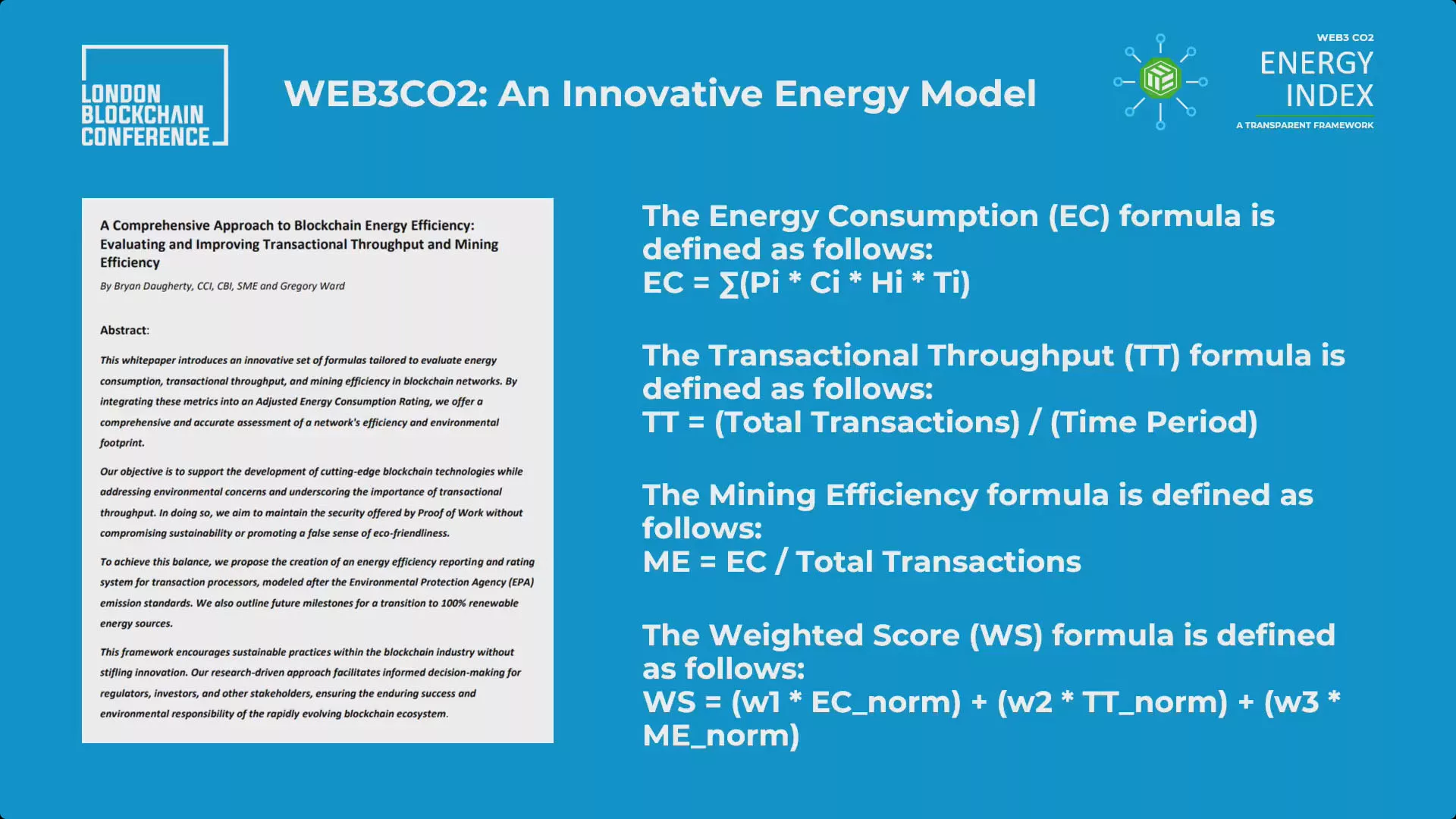
Not only will this re-set the way we look at blockchain in a vacuum, but it will assist in comparing blockchain energy efficiency to legacy technologies and payment systems.
Watch: What we need to do is incrementally improve business processes

 09-18-2025
09-18-2025 
